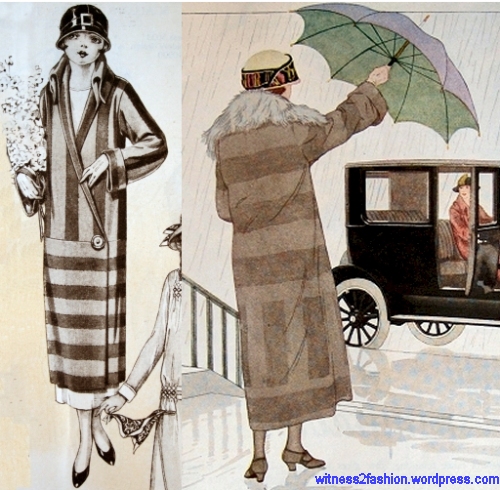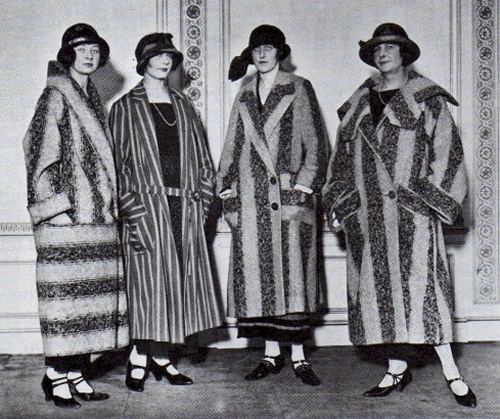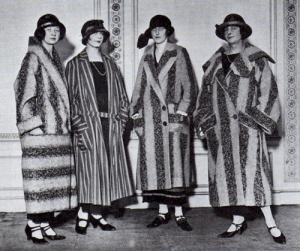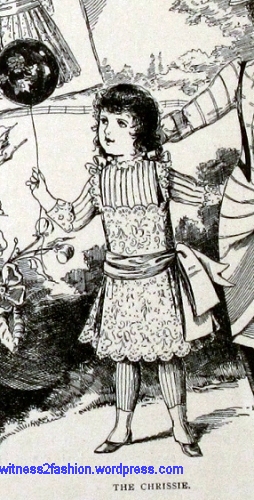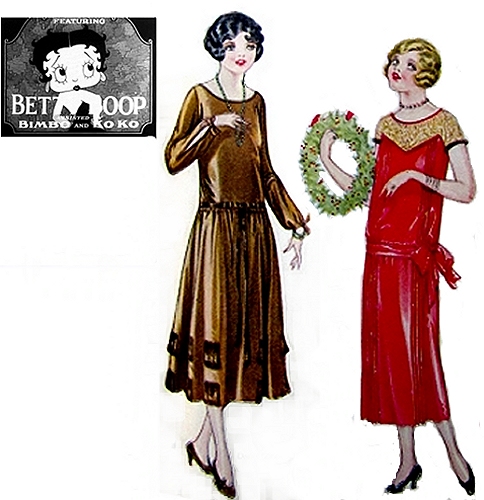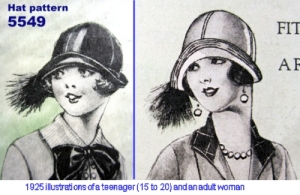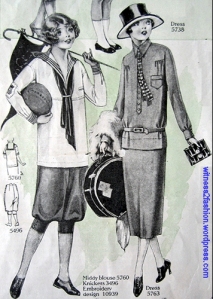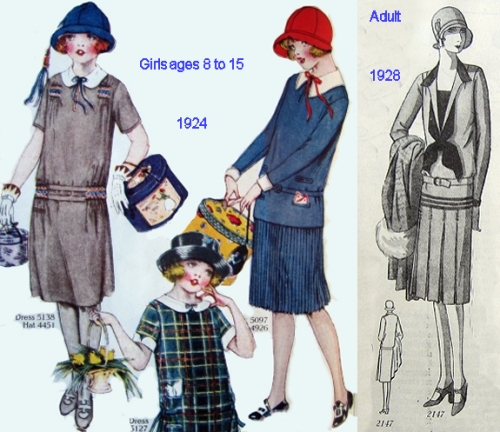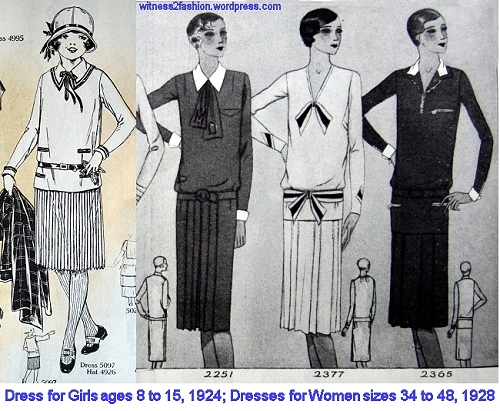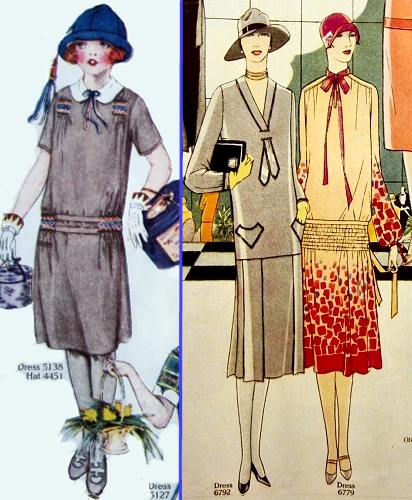“Soulié’s Sketches Sent from The Delineator’s Paris Establishment Draw Attention to Godets, Princess Lines, and Frills Flat or Otherwise.” — Headline in Delineator Magazine, January 1924
Butterick Publishing Company kept an office in Paris for the purpose of following the latest fashion trends and reporting on them. (Not to mention producing Butterick patterns based on those trends.)
In January of 1924, Soulié sketched designs by several well-known Paris houses: Patou, Agnès, Doucet, Louise Boulanger, and Poiret. Since Downton Abbey’s current season is set in 1924, this seems like a good time to show some 1924 French designs. (Even though my real interest is in clothing for ordinary people, the influence of major French designers always percolates down through the department stores and pattern houses.)
Jean Patou
A coat (left) and a suit (right) by Jean Patou, January 1924. Sketches by Soulié for Delineator magazine.
“A coat that has quite the cut of a suit is made by Patou of black kid lined throughout with persisky — a form of civet — and trimmed with straps.” [In other words, this is a soft leather coat lined with fur.]
“Flat frills begin where the straight coat ends in a suit of green fulgarante with a knee-length bodice of green and gold brocade with collar and cuffs of gray fox. From Jean Patou.” [“Fulgarante” is apparently one of those words with a specialized meaning to fashion writers; it is Spanish for “blazing.”]
Agnès
“Suit coats are of all lengths and many cuts, but the string-tied jacket and narrow skirt remain as popular as ever. Agnès uses them for a suit of beige zibella velours de laine with bearskin collar and cuffs.” In January of 1913, the New York Times reported that “Velour de laine, that soft, silky woolen tissue that arrived in the Autumn and was so popular till satins and silks usurped its place later, has now reappeared ….” [ Velours means velvet, laine means wool, and zibella is a mystery to me!]
“Gold braid underscored with rose-colored embroidery binds the slashed edges of an overdress and tunic of black crêpe marocain. The foundation is narrow, the sleeve short, and the length about eight inches from the floor. From Agnès.” You can find out more about Agnès, and see one of her dresses, at 1stdibs. Click here.
Paul Poiret

A dress with metallic threads and a cape-like coat by Paul Poiret, sketched by Soulié for Delineator, January 1924.
“For the new note of gorgeousness that the French dressmakers are introducing, Poiret uses embroidery of silver and gold on a dress of blue poplacote moire.” [Poplacote is another term my search engine has never encountered.]
“Poiret uses suède-colored sapho velvet trimmed with civet cat for a wrap that hides the fact that it is a coat under cape-like sides lined with black satin.” There is a brief biography of Paul Poiret at Encyclopedia Britannica (click here). The Metropolitan Museum devoted an exhibition to Poiret in 2007; click here to visit it online. You can see his iconic “lampshade” dress of 1912 in the collection of the Victoria and Albert Museum. Click here. (Be sure to look at the second image — the color and beadwork is lovely.)
Louise Boulanger [She later designed as Louiseboulanger.]
“The Ladies’ Book of 1924 is to show godets in skirts and capes according to an interesting coat of green wool duvetyn [a brushed woolen fabric] with a civet collar from Louise Boulanger.” You can see another 1920s dress by Louiseboulanger in the collection of the Metropolitan Museum. Click here.
“Also from Louise Boulanger comes a dress of bright blue matelassé flared at the foot, banded low on the hip and embroidered in gold on copper at the V neck.” [The Fashion Model Directory says Louise Boulanger worked for Cheruit until 1927, but the Delineator attributed these designs to her in 1924.]
Doucet
“Doucet’s characteristic elegance speaks for itself in an evening gown of steel lace over a blue silk slip. A girdle of blue chenille fringe is clasped with a motif of diamonds and blue stras. [Stras is a type of artifical jewel.]” The illustration shows the shoulder drape of the the black dress on the right hanging confusingly in front of the light-colored dress on the left — it does not have a black panel in front! You can read more about Jacques Doucet at Fashion Model Directory; click here.
“The new princess line, flat, beltless and narrow, shows itself to great advantage in a Doucet gown of black crêpe velours embroidered with blue and gold Chinese motifs.”
A Few Observations About These Fashions from January 1924
- Skirts are still quite long — only 8 inches from the ground.
- All the models have short, “bobbed” hair.
- Most of these designs have strong accents at the hip; only the heavily embroidered Doucet gown is a tube.
- The “princess line” is “new.”
- Fur adds a note of luxury to all the daytime fashions, either as collars, cuffs, belts, (even coat lining,) or carried as a stole or muff.
- Soulié has drawn most of the models wearing rather high heels, which means the skirts are very long to still be 8″ above the floor.






